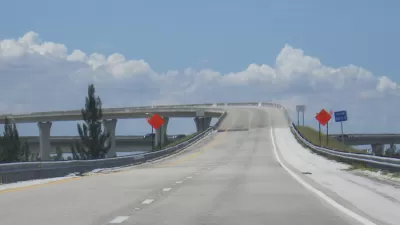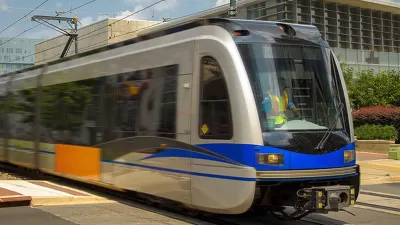They could opt for a one percent, 30-year infrastructure tax, a .75 percent, 20-year transportation sales tax, approve both, or reject both. The two competing measures arise from differences between the county's 31 cities and county commissioners.

It's turning into a referendum of sorts between city leaders and county commissioners in Broward County, Florida, home to Fort Lauderdale, Pembroke Pines, and Hollywood, its three most populous cities. The county, with an estimated 2015 population of 1,896,425, is the second most populous in the state after Miami-Dade.
The county's 31 cities, acting as members of the Broward Metropolitan Planning Organization (MPO), opted in May to place a one percent, 30-year infrastructure sales tax that cities, with 60 percent going to them; the remainder to the county. "It can be used on curbs, gutters, flood control, fire trucks, city buildings, preparing for climate change and improving local roads," writes Brittany Wallman, the Sun Sentinel's county government reporter.
Tamarac Mayor Harry Dressler argued that aging infrastructure is a national, state, county and city crisis. He said the infrastructure surtax would allow cities to reduce property tax rates, to reduce the tax burden on homeowners.
Using a countywide sales tax to reduce local property taxes might seem incompatible for a regional transportation planning organization that lists its vision to "transform transportation in Broward County to achieve optimum mobility with emphasis on mass transit...."
As noted back in April, the effort to place a sales tax measure before voters began with a 7-1 vote by the Broward County Commission to fund countywide road and transit improvements. Ultimately that did not sit well with MPO members, as noted on May 6, who wanted a greater share of the 70-30, county-cities split.
Ignoring MPO-member pleas to avoid placing a competing measure on the ballot, county commissioners voted 5-3 on May 24 to place a .75 percent, 20-year transportation tax on the ballot.
Unlike the previously proposed transportation tax, this one would flow 100 percent to the county, Transportation Director Chris Walton said, and would enable the buildout of 32 miles of light rail*. [Broward County Commissioner Tim Ryan, chief architect of the transportation tax,] said it also would be used for enhanced bus system, traffic light synchronization, improvement and expansion of regional roads, greater community bus service and upgrades to school safety zones.
A final vote for the city-sponsored, or MPO, tax is needed June 14, the county attorney's office said, adds Wallman.
The county sales tax now is 6 percent. Depending on the outcome of November's vote, the tax will:
- Increase to 6.75 percent
- Increase to 7.00 percent
- Increase to 7.75 percent
- Remain at 6.00 percent
Broward County rail service
*This correspondent couldn't identify the light rail line referenced above by Transportation Director Walton. Broward County is served by the commuter rail line, Tri-Rail. Planetizen indicated last September that new service between between Miami and Palm Beach was moving forward.
There is also a Tri-Rail Coastal Link "dedicated to reintroducing passenger rail service to the historic downtowns of
South Florida along the Florida East Coast Rail Corridor." The new commuter service will run on tracks parallel to I-95 on the eastern side. Current service is on tracks on the western side.
The South Florida Regional Transportation Authority (SFRTA) has completed the design phase for a 2.7 mile streetcar called the Wave for Fort Lauderdale. "The first phase includes a 1.4 mile downtown loop scheduled to open in 2016," per Wikipedia.
Finally, All Aboard Florida, now called Brightline, is a 'higher-speed', 240-mile intercity rail line between Miami and Orlando, with service between Miami, Fort Lauderdale and West Palm Beach projected to start next year.
Hat tip to Planetizen reader David Daniels.
FULL STORY: Two proposed sales tax hikes headed to November ballot in Broward

Alabama: Trump Terminates Settlements for Black Communities Harmed By Raw Sewage
Trump deemed the landmark civil rights agreement “illegal DEI and environmental justice policy.”

Study: Maui’s Plan to Convert Vacation Rentals to Long-Term Housing Could Cause Nearly $1 Billion Economic Loss
The plan would reduce visitor accommodation by 25% resulting in 1,900 jobs lost.

Planetizen Federal Action Tracker
A weekly monitor of how Trump’s orders and actions are impacting planners and planning in America.

Wind Energy on the Rise Despite Federal Policy Reversal
The Trump administration is revoking federal support for renewable energy, but demand for new projects continues unabated.

Passengers Flock to Caltrain After Electrification
The new electric trains are running faster and more reliably, leading to strong ridership growth on the Bay Area rail system.

Texas Churches Rally Behind ‘Yes in God’s Back Yard’ Legislation
Religious leaders want the state to reduce zoning regulations to streamline leasing church-owned land to housing developers.
Urban Design for Planners 1: Software Tools
This six-course series explores essential urban design concepts using open source software and equips planners with the tools they need to participate fully in the urban design process.
Planning for Universal Design
Learn the tools for implementing Universal Design in planning regulations.
Caltrans
Smith Gee Studio
Institute for Housing and Urban Development Studies (IHS)
City of Grandview
Harvard GSD Executive Education
Toledo-Lucas County Plan Commissions
Salt Lake City
NYU Wagner Graduate School of Public Service




























